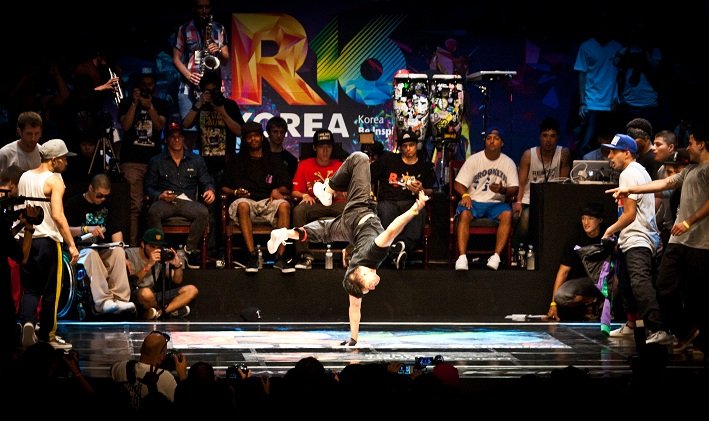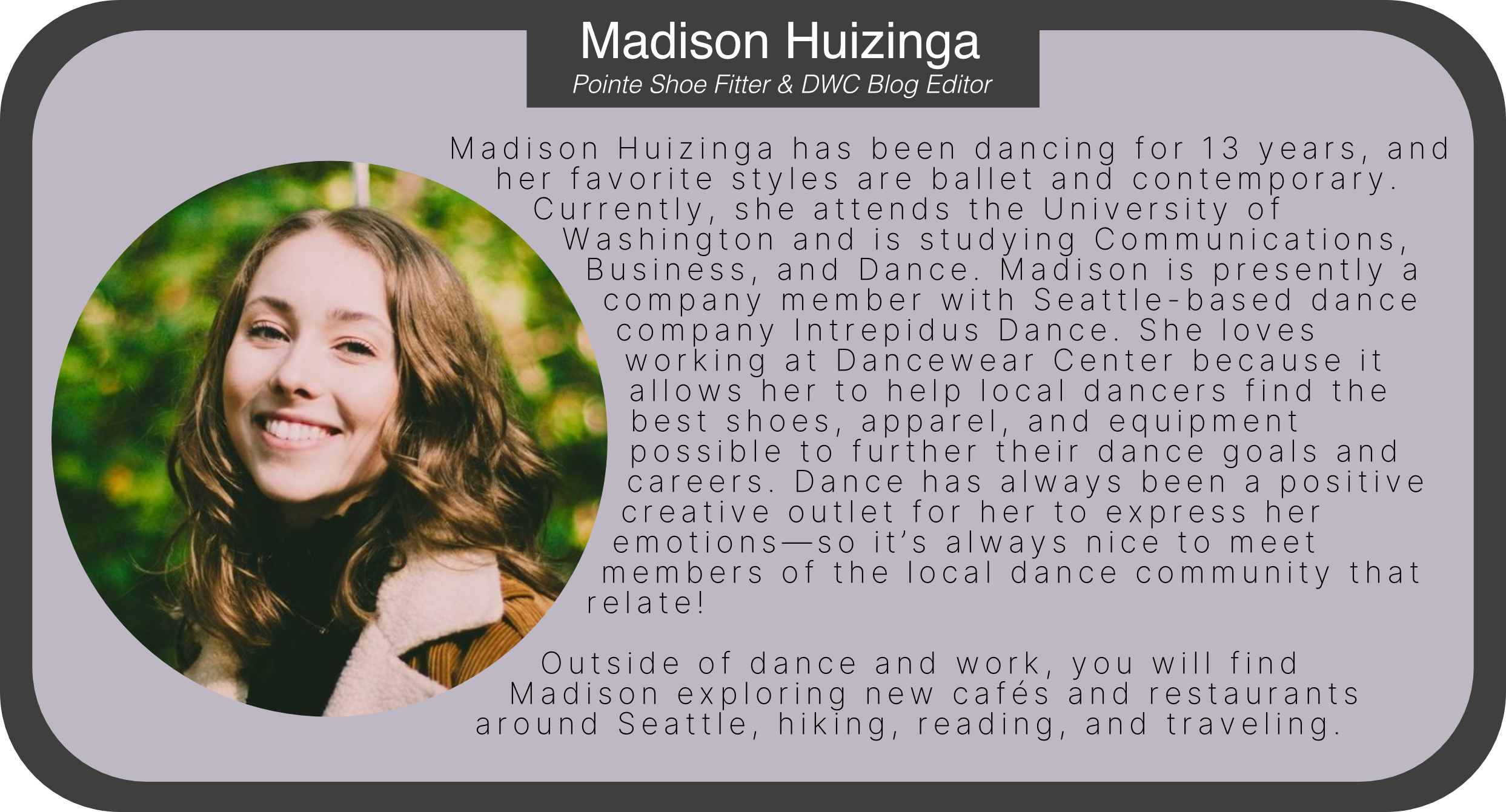Tracing the Origins of Hip Hop
A Chronicle of Hip Hop Through the Years
By Madison Huizinga, DWC Blog Editor
From small house parties in New York City to loudspeakers across the world, hip hop has become a global sensation over the last handful of decades. Emerging from a prolific Black community in The Bronx, hip hop culture continues to develop and expand in unique ways, from musical innovations to developments in the B-boy and B-girl landscape. But where exactly did it all begin?
According to "The Birth of Hip Hop" by Black History in Two Minutes or so, hip hop emerged from house party culture within The Bronx neighborhood in New York City in the 1970s. Easing out of the disco era, hip hop offered an electrifying and enticing new sound.
Hip hop pioneer Grandmaster Caz shares that there are four foundational pillars to hip hop culture: DJing, MCing or rapping, graffiti, and breakdancing. A turntable was at the center of the hip hop movement, which was comprised of a circular rotating platform on a phonograph. Those without access to instruments could use a turntable to play and mix sound recordings that they had on hand. For example, using two copies of a record, if there was a portion of a song a DJ liked, such as a drum break, the DJ could play that portion on loop, remixing the song into their own creation. Seattle-based professor, writer, and historian Dr. Daudi Abe points out that in this way, hip hop was one of the first genres of music to create music out of already existing music.
At house parties in the 70s, during "breaks" in a DJ set, MCs would hop on the mic and start rhyming and singing to keep the energy of the party alive. Similarly, B-boys and B-girls would dance on the breaks, thus the label "break dancing" or "breaking" was coined.
The hip hop movement in The Bronx began as an underground one with a homemade music distribution system. Since hip hop albums to be sold in stores weren't being produced yet, creators would distribute their music via cassette tapes, which would circulate throughout NYC. Eventually, this underground movement was brought more mainstream, with the advent of classic records like The Sugar Hill Gang's 1979 hit "Rapper's Delight.
Photo by Joel Muniz from Unsplash
According to Dr. Daudi Abe, hip hop was born out of the African American experience. Marcyliena Morgan, professor of African & African American Studies at Harvard University concurs, shares that hip hop emerged out of The Bronx because it contained a thriving African American community and an abundance of immigrants, who would all bump into each other as they walked on the street, exposing themselves to each other's unique ideas and experiences. Importantly, the lyrics of many hip hop songs reflected the social and economic conditions of inner cities according to folks that lived in those communities. Dr. Morgan stresses the importance of authenticity in representation within the genre, as hip hop artists looked at the history of their community, schools, city, and world to represent their culture in accurate and creative ways. Songs like "The Message" by Grandmaster Flash & The Furious Five and "Fight the Power" by Public Enemy in the 1980s reflect this idea well.
Dr. Daudi Abe has dedicated much of his work to educating others on the hip hop landscape of Seattle. The Garfield High School and University of Washington alum grew up in the Central District of Seattle and recalls falling in love with hip hop when he set foot in a record store with his father. Growing up, Abe listened to much of what his parents listened to, an eclectic mix of artists from the United States, Africa, and more. When he and his father stepped into a record store on the corner of 22nd and Union St, Abe was told that he could select any record he wanted. He was quickly drawn to a vinyl record with a multi-colored, swirly design, and selected that as his pick. Little did Daudi Abe know that the record was “Rapper’s Delight” by The Sugar Hill Gang. Drawn in by the familiar bassline and the unique lyrics, Abe was immediately hooked. “I consider myself and people of my generation so fortunate to have been born when we were,” he shares. “I really feel like I grew up into adolescence as hip hop was doing the same.”
“The [breaking] community has been so strong around here because the best and the brightest have always made it their business to turn around and offer mentoring”
Dr. Abe “fell into teaching in the early 1990s” and managed to include many popular hip-hop cultural references into his lessons to better connect with his students. After eight years of teaching kindergarten through eighth grade, Abe earned his Ph.D. in education at the University of Washington, later teaching at Seattle Central College where he felt he possessed more intellectual freedom in terms of creating his own curriculums.
In his work, Abe shares that hip hop is the “ultimate do-it-yourself culture.” He says that hip hop managed to become a “phenomenon that has broken down barriers, both geographic and social” and created a lasting impact arguably greater than any other cultural movement post-Civil Rights era.
His book Emerald Street: A History of Hip Hop in Seattle, featuring a foreword by Sir Mix-A-Lot, chronicles how hip hop has shaped urban life and the music scene in Seattle, a city he considers the cultural capital of the Pacific Northwest. Considering that Seattle is relatively geographically isolated from other major American cities, it had the chance to create a distinct hip-hop culture and not conform to dominant trends. The emergence of the song and music video for “Posse on Broadway” by Sir Mix-a-Lot is a great example of Seattle cementing its unique voice in the national hip hop landscape.
Seattle hip hop culture largely emerged out the Central District, where artists like Sir Mix-a-Lot frequented house parties to perform. Abe stresses that beyond rapping, DJing, breaking, and graffiti, the Seattle hip hop culture has influenced politics, relationships between communities of people of color and law enforcement, youth outreach and educational programs, and more.
In regards to B-boy culture, the theme of youth empowerment carries through. Fever One of the iconic Rock Steady Crew has dedicated much of his career to mentoring young people in the Seattle area, specifically at Jefferson Community Center, a space that became a mecca for breaking in Seattle. Crews who were formerly rivals were able to converge on common ground, including Massive and Untouchable Style Monkees, who eventually morphed into the crew Massive Monkees. Founding members of the crew, like Jerome “Skee” Aparis, have carried on Fever One’s tradition of community outreach, continuing to provide breaking opportunities and education to subsequent generations, specifically with the Massive Monkees Studio: The Beacon.
“The [breaking] community has been so strong around here because the best and the brightest have always made it their business to turn around and offer mentoring,” Dr. Abe stresses.
He stresses that although the view of hip hop culture in Seattle hasn't always been flattering, many hip hop cultural touchstones have been born out of this region. This includes FreshTracks, the first rap radio show west of the Mississippi, and The Emerald Street Boys who were known for combining rap music and dance and became the first Seattle artist to record a rap record in the 1980s. Contemporary artists like Macklemore and Laura "Piece" Kelly continue to add vibrancy and dynamism to the Seattle hip hop legacy.
Over 50 years after its conception, hip hop is still one of the most popular music genres out there, connecting people across the globe. With the rise of the Internet and the emergence of unique rap personalities adding their own spin on the genre, hip hop continues to remix and expand into more nuanced interpretations. It’ll be exciting to see where hip hop goes in the years to come.



